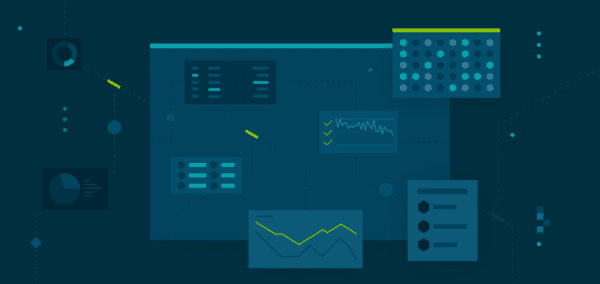
The Challenge: Ensuring the Moments That Matter Actually Happen
Today, mobile apps generate at least $935 billion in revenue, but the problem of creating and delivering a great user experience persists.
While investments in monitoring, observability, and analytical tools – such as cloud data warehouses – have steadily increased, businesses are still struggling to understand if “the moment that matters” in their app works as intended or poses a frustrating experience for their users.
What are the moments that matter? It’s unique for every app, but it’s any point in a user’s journey that impacts revenue. Think: the check-out process on an ecommerce app, pushing “subscribe” on a streaming app, or submitting your order on a food delivery app.
Even though they invest heavily in monitoring and observability, operations team often learn about horrible user experiences on social media, not from the multi-million-dollar monitoring stack that’s purpose built to surface those issues before they ever impact the user experience.
When the moments that matter break, and users cannot login, buy, subscribe, watch, order, book, or anything else that generates revenue for your business, dollars are lost every minute.
In every app there are critical user flows that highly impact
revenue, retention, and engagement
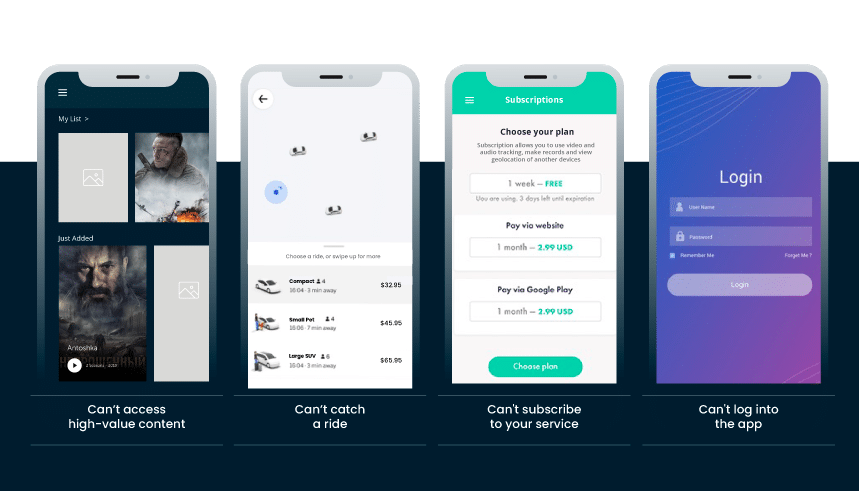
Monitoring and fixing experience issues in real-time should be the #1 priority, not server-load, gateway uptime, or any other surface-level performance metric.
Why Is the User Experience Challenge Unsolved?
So, why hasn’t all this investment paid off?
The problem with traditional monitoring and observability is that the focus is on backend systems and performance metrics (like memory consumption, CPU utilization, IO, request/response times) – not user experience.
To measure user experience, a client-side approach is needed, aligned with experience metrics (like time-to-login, time-to-purchase, sessions without purchase, etc.). These metrics start with user experience then drill down to client-side and backend performance.
The reasoning is simple: user experience can be bad despite all backend systems showing green. A simple UI change can lead to a drop in subscriptions. An app upgrade that invalidates the authentication token can dramatically increase login times. These are not backend issues.
Conversely, a server node going down might trigger an alert in the NOC, but the impact on users may be minor.
How To Solve the User Experience Challenge
To understand user experience, its impact on user engagement, and troubleshoot issues, it is critical to:
-
- Use experience metrics starting on the client-side, drilling into performance on the client and server-side (not just server-side centric monitoring) to see what the user actually experiences.
- Monitor in real-time at full census scale (not just simple sampling) to avoid any delay or blind spots.
- Leverage experience metrics like time-to-purchase (not just error counts) to understand what happens at the user level.
In other words, engagement (what the user does – e.g., click or not click the purchase button), must connect with experience (what the user is presented with – e.g., a cumbersome purchase flow) and with performance metrics (e.g., long page load times for the purchase screen, payment gateway CPU overload, etc.)
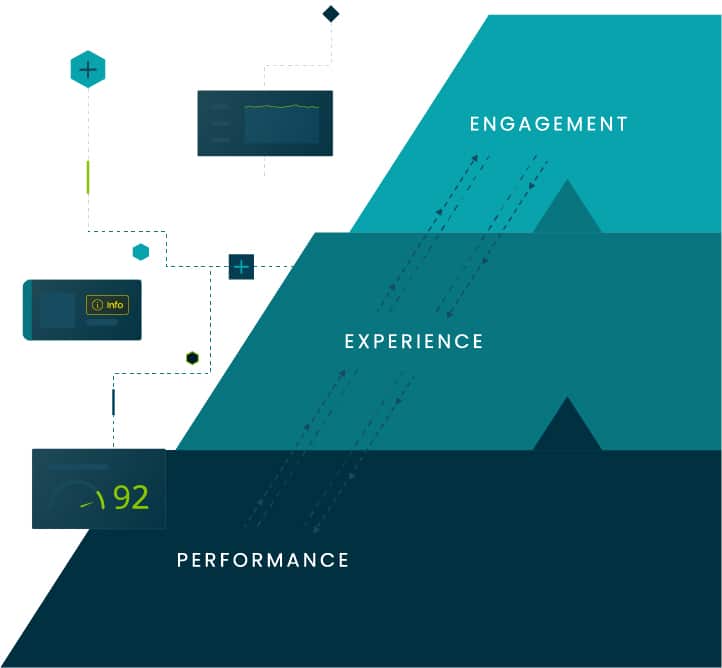
Below is a typical application flow: logging in, payment processing and watching a video.
Conviva for App can model any critical user flow with experience metrics for the moments that matter for your business.
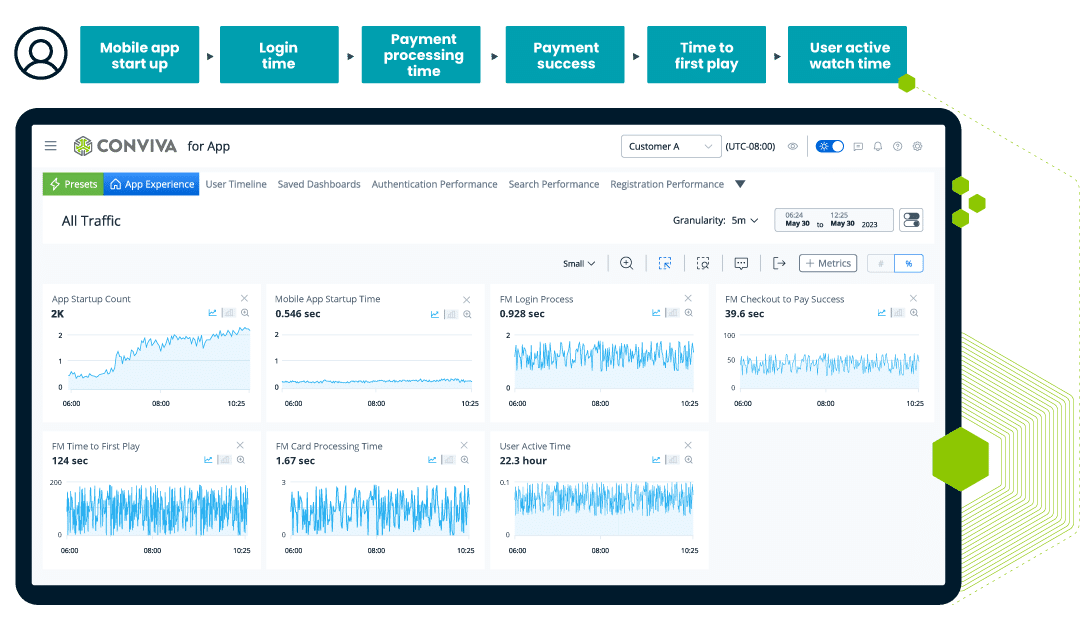
These metrics make it easy to see, in real-time, if users encounter any problems or challenges. And if there are issues, you can start by drilling into the root cause by slicing and dicing the data by device, location, connection type, OS, app version, and more. Then you can drill into more detailed metrics such as network request times, failures rates and app crashes to identify issues that impact use experience and behavior.
Below is an example of how this root-cause identification works.
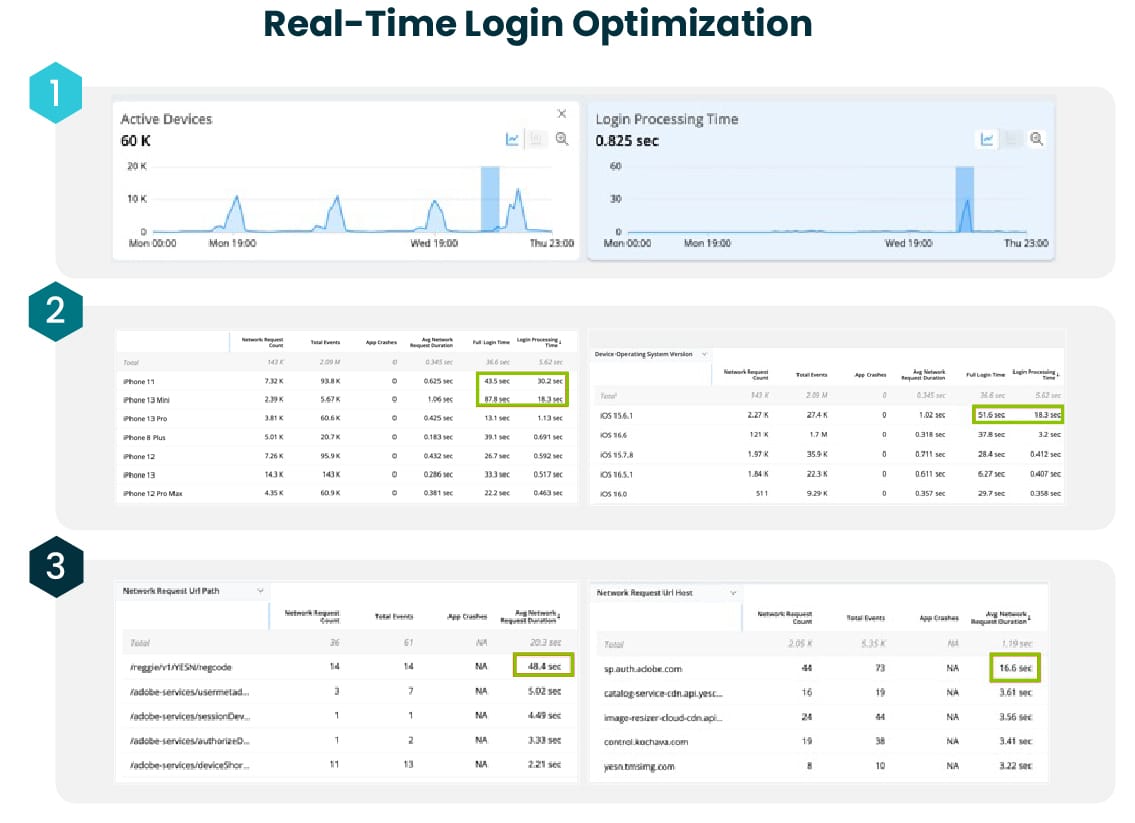
Step 1: Identify a spike in login processing time in real time.
Step 2: Drilling into devices and the subsequent OS version shows that iPhone 11 and iPhone 13 Mini had a high login time. Furthermore, the issue is isolated to iOS version 15.6.1.
Step 3: Drilling into the network request path and URL host uncovers that the culprit for the long login time on these specific iOS devices is a third-party authentication call to Adobe. That is actionable feedback for the iOS developer to address, and fixing it will directly improve the user experience in the app.
How Can Conviva’s Operational Data Platform Improve Your Application’s User Experience?
How can Conviva protect the moments that matter for businesses and ensure users can purchase items, watch shows, book cabs, or subscribe to content?
Conviva already solves a similar problem for broadcasters who want to improve the viewing experience of their video streams. By simply expanding its data ingestion to include app events, Conviva helps customers deliver a better user experience, resolve issues faster, and reduce overall costs by eliminating unnecessary data and processing by using Conviva’s Time-State Technology.
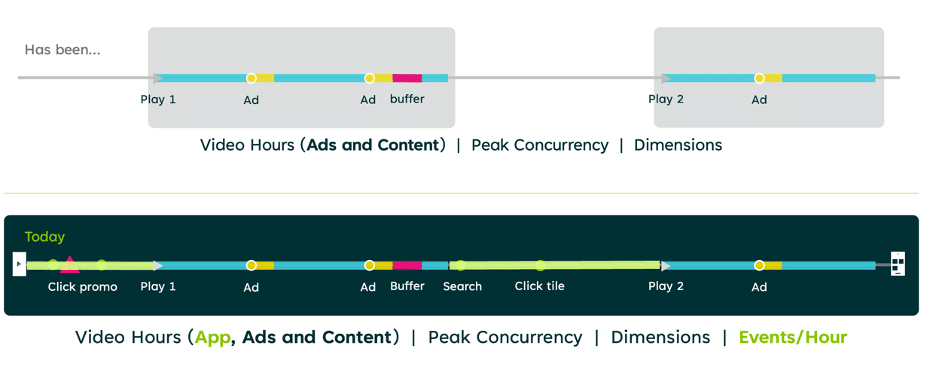
Conviva converts experience, performance, and engagement data into real-time operational metrics. With natively connected data, doing deep root-cause analysis and proactively resolving issues that impact user experience as they are happening.
Users won’t wait around for you to conduct deep root cause analysis hours or even days after an issue occurs – they expect their apps to work now. The moments that matter in any app need to be protected, and any issues with those moments resolved in real-time, to ensure no revenue is lost. Operational teams have the power to drive revenue generation for their business – they just need the right insights to design an app experience purpose-built for engagement.
About Conviva
The Conviva Operational Data Platform is the first and only monitoring and analytics tool to connect complex system performance directly to business outcomes at scale, in real time.
Many know Conviva as the market leader in video streaming analytics, trusted by 12 of the world’s top 15 broadcasters, to monitor the quality of viewer experience for their video streams.
Conviva does this by ingesting 5 trillion events per day from 7 billion SDKs and turning this data into real-time actionable insights to improve viewer experience. Conviva does this not only for on-demand content like movies or TV shows, but also for massive live events like the Superbowl, World Cup, and the Olympics.
Conviva now extends this monitoring and analytics capability beyond the video player and into the application itself. Conviva for App natively connects user engagement, user experience, and infrastructure performance to provide a holistic view across backend issues impacting application performance connected to user engagement, so you can do deep root-cause analysis and proactively resolve issues that impact user experience in real-time.







